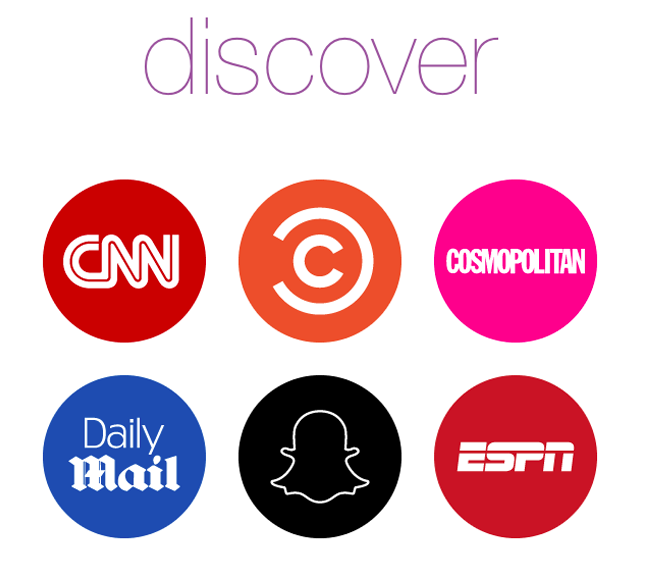The Next Internet Is TV

I was talking to someone who works on one of those half-dozen or so apps that we tend to associate with teenagers: the ones that were built around some novel concept that distracted us for a few years while they settled into their roles as slightly different ways to text. He mentioned something, offhand, while describing his anxieties about his job, that to him felt obvious. In his weird zone of the internet, he said, the concept of a large publication seemed utterly hopeless. The only thing that keeps people coming back to apps in great enough numbers over time to make real money is the presence of other people. So the only apps that people use in the way publications want their readers to behave — with growing loyalty that can be turned into money — are communications services. The near-future internet puts the publishing and communications industries in competition with each other for the same confused advertising dollars, and it’s not even close.
This is a stray observation from an app bubble within an investment bubble. But if you listen to what the internet’s best-capitalized and savviest media companies — which themselves exist in a (separate) set of Matryoshka bubbles — are saying, and watch what they are doing, you can tell that they don’t think it’s crazy.

Here is a question worth asking of any large media company, as well as an answer:
Disney has given Fusion a lot of money to launch. What does the company see as a successful return on that investment? Traffic goals? TV audience? Influence?
I think it’s all of the above. Part of our overall mission is to be a lab for experimentation and innovation for our parent company. Univision and ABC want Fusion’s help in figuring out how to reach this incredibly dynamic, diverse, and digitally connected audience, so we’ll be investing heavily in audience development and technology and transferring knowledge to the parent company about what we learn.
This might sound a little deflating to Fusion’s newly launched site, which surely doesn’t think of itself as a market-research arm for an entertainment conglomerate, but it’s not, really. This is a journalist and manager speaking the language of her business, acknowledging Fusion’s particular relationship with the capital that keeps it running. If anything it should be read as comforting. It suggests a mothership that is more interested in observing than meddling, at least for the time being. (The startup’s equivalent answer: “Sale or IPO, idiot! And in the meantime…”)
Fusion is fun to think about because it exists very slightly outside the weird new Zones of Content. It isn’t an established print publication trying to revamp itself under the same name for the fifth time in fifteen years, nor is it a VC-funded company that people started paying attention to a few years ago and that’s speeding toward some sort of liquidity event. What does it want? To build “a new kind of newsroom to greet the changing demographics of America” that is also “a little bit outside of the media bubble.” When does it want it? As soon as possible, but, whatever.
Another thing that Fusion does not have to do is decide what kind of company it is, because it is a literal extension of much larger ones that already know. For Fusion to talk about “promiscuous media” and “build[ing] our brand in the places [the audience] is spending time” — as opposed to publishing everything on a single website and hoping it spreads from there — is not strange in the context of television companies. They’re used to filling channels that they don’t totally control.
Meanwhile, some of the most visible companies in internet media are converging on a nearby point. Vox is now publishing directly to social networks and apps; BuzzFeed has a growing team of people dedicated to figuring out what BuzzFeed might look like without a website at the middle. Vice, already distributing a large portion of its video on Google’s YouTube, has a channel in Snapchat’s app, along with CNN, Comedy Central, ESPN, Cosmo and the Daily Mail.

So, for the sake of thinking things all the way through, let’s grant this: that, for a publisher that wants to grow dramatically, websites are unnecessary vestiges of a time before there were better ways to find things to look at on your computer or your phone. What happens next? What does a media that knows or believes this look like? This is an incredibly obvious question that nobody seems to have taken much time to talk about??? I mean you have the “director of audience development” at Vox telling trade publications that “in general, we do see higher sharing rates from the native-only posts” and then its “global vp of marketing and partnerships” dropping this excellent quote:
The great thing about Facebook leaning in to the new video strategy is that publishers on average are seeing a lot more views and a lot more engagement with that video content. This could theoretically be a pretty massive revenue stream with publishers when and if they do enable monetization around this inventory.
“When and if,” lmao. When and if!
So, when and if and when, it’s not too hard to imagine how Content Internet’s web abandonment accelerates. Following a brief and painful period of can’t-beat-em-join-em soul searching, companies with the most financial and operational freedom experiment with channels in apps. “More people are over there, but we are here, so why don’t we go over there?” managers will ask-splain in tense meetings. These companies suddenly reach more people than ever. Some of them figure out how to make a lot of money in the process, either from some sort of revenue sharing or through sponsored content. They begin to see their websites as Just One More App, and realize that fewer people are using them, proportionally, than before. Eventually they might even symbolically close their websites, finishing the job they started when they all stopped paying attention to what their front pages looked like. Then, they will do a whole lot of what they already do, according to the demands of their new venues. They will report news and tell stories and post garbage and make mistakes. They will be given new metrics that are both more shallow and more urgent than ever before; they will adapt to them, all the while avoiding, as is tradition, honest discussions about the relationship between success and quality and self-respect. They will learn to cater to the structures within which they are working and come up with some new forms. Some of what worked in print didn’t work on the web; some of what worked on the web didn’t work on social media; some of what worked on social media won’t work in these apps. (If you think Facebook had a distorting effect on news as a mere referrer, just wait until it’s a host.)

What was even the point of websites, certain people will find themselves wondering. Were they just weird slow apps with nobody in them?? Why? A bunch of publications will go out of business and a bunch of others will survive the transition and a few will become app content GIANTS with news teams filing to Facebook and their very own Vine stars and thriving Snapchat channels and a Viber bureau and embedded Yakkers and hundreds of people uploading videos in every direction and brands and brands and brands and brands and brands, the end. Welcome to 201…..7?
This is a huge financial opportunity, obviously! Media companies will realize the potential in the platforms’ audiences; the platforms will see a way, in media companies, to extract more money and time from the people they have already gathered in one place. (“I can’t tell you what the numbers are, but they’re fucking incredible,” says an anonymous source, already, of Snapchat’s channels.)
Meanwhile, the amount of time you spend on these channels will increase not quite as quickly as the supply of things to look at on them, and everything will be fine. Everything is always fine, when it comes to things like this, because capitalism knows better than to ever look back. (There will also be quite a few jobs, at least, which is great!)
The gaps left by the websites we stop looking at will be filled with new things, and most people won’t really notice the change until it’s nearly done, because they will have been incredibly not bored. Maybe the web thrives in a new and unexpected way as it is again relegated to marginal status? Maybe it just chugs along because nothing seems to fully die on the internet anymore. Sure, why not? Teens, whose idiot mystique will have played no small part in setting this whole thing in motion, will meanwhile begin plotting their escape.

In this future, what publications will have done individually is adapt to survive; what they will have helped do together is take the grand weird promises of writing and reporting and film and art on the internet and consolidated them into a set of business interests that most closely resemble the TV industry. Which sounds extremely lucrative! TV makes a lot of money, and there’s a lot of excellent TV. But TV is also a byzantine nightmare of conflict and compromise and trash and waste and legacy. The prospect of Facebook, for example, as a primary host for news organizations, not just an outsized source of traffic, is depressing even if you like Facebook. A new generation of artists and creative people ceding the still-fresh dream of direct compensation and independence to mediated advertising arrangements with accidentally enormous middlemen apps that have no special interest in publishing beyond value extraction through advertising is the early internet utopian’s worst-case scenario.
oh my god pic.twitter.com/iXHoud8I5X
— stefan (@boring_as_heck) January 26, 2015
And so one more obvious theoretical question for this particular view of the future that seems to be quite popular right now, in which we have circled back to TV via the internet or apps or social media or even TV itself: Wasn’t the internet supposed to be BETTER, somehow, in all its broken decentralized chaos and glory? The TV industry, which is mediated at every possible point, is a brutal interface for culture and commerce.
Within a week of launch, we’re already reading stories like this about “creative differences” with the network Snapchat:
When Snapchat last month debuted its Discover feature — a new section within the app that shows articles and videos from a range of media companies — one rumored launch partner was noticeably absent: BuzzFeed.
…
[T]he two companies were at loggerheads creatively, people at the meeting said. At issue was the fact that Snapchat’s editorial team would be involved in BuzzFeed’s content, creating friction. The two companies had “creative differences,” Mr. Peretti said at the meeting, a person with the matter said.
If in five years I’m just watching NFL-endorsed ESPN clips through a syndication deal with a messaging app, and Vice is just an age-skewed Viacom with better audience data, and I’m looking up the same trivia on Genius instead of Wikipedia, and “publications” are just content agencies that solve temporary optimization issues for much larger platforms, what will have been point of the last twenty years of creating things for the web?
These are just some of the many questions that feel impertinent as your body accelerates at the rate of gravity.

Correction: A quote originally attributed to Vox’s “director of audience development” was in fact delivered by Vox’s “global vp of marketing and partnerships.” We regret the error!
Disclosures: The current editors of The Awl, after being bred together in a small petri dish in the back of the refrigerator that holds the cold brew at BuzzFeed, resided there for a time, producing a technology vertical from underneath a stack of seltzer cans. Giph via Giphy.
